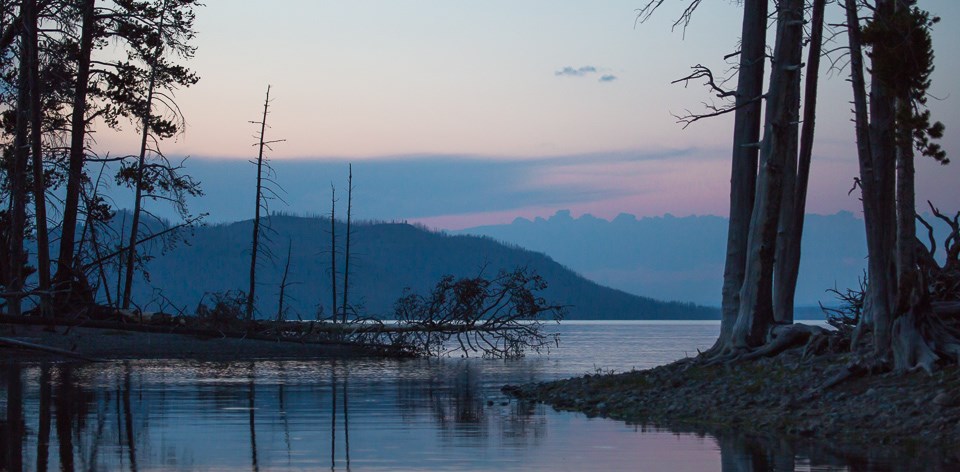Yellowstone Lake, which is the largest high-elevation lake in North America, is doing something that no other high-elevation lake in the world is doing: it’s staying cold.
Researchers write in the journal Environmental Research Letters that despite temperatures rising in the area around the lake and at places around the globe, nothing has changed about when ice forms on Yellowstone Lake in the winter and melts in the summer.
“Pretty much every other lake in the world has shown later times when ice formed and earlier times when the ice melts off. Yellowstone Lake hasn’t changed, and that’s why we’re so surprised,” Lusha Tronstad, lead invertebrate zoologist with the University of Wyoming’s Department of Zoology, told the Casper Star-Tribune.
Researchers say that since 1950, annual temperatures have risen by 1.8 degrees Fahrenheit across the greater Yellowstone ecosystem. And at the high elevation of Yellowstone Lake, air temperatures rose by 2.5 degrees between 1980 and 2018. Scientists think those changes should prompt an environmental response to include ice forming later and melting sooner.
But at Yellowstone Lake, the winter freeze has been uncannily stable for close to 100 years.
The difference may be related to snowfall amounts. Since 1927, cumulative spring snow at the lake has nearly doubled from an average of 50 centimeters to 100 centimeters today. Scientists suggest the increased snowpack has insulated the lake and kept ice formation patterns consistent.
“Shifts in local precipitation especially increases in fall and spring snow, appear to be buffering ice phenology against warming temperatures,” the study declares. Phenology is defined as the science of the relations between climate and periodic biological phenomena, as the migrations and breeding of birds, the flowering and fruiting of plants, etc., according to the American Heritage Dictionary.
The article in Environmental Research Letters claims what’s happening at Yellowstone Lake stands in contrast to sister ecosystems in the Green River Basin to the south, where snowfall has declined at high elevations, highlighting the nuances of climate change repercussions.
Back in 1927, park rangers began keeping track of when the lake began to crust over with ice and when the ice began its melt-off by writing in pencil in leather-backed notepads. Scientists today use different methods of data-keeping, but they use the same technique: visually observing the lake from vantages near the Lake Village Ranger Station.
The findings add to the uniqueness of an area already beloved by scientists, who in the years since early park rangers have unearthed a host of wonder: Thermal vents percolating up from the lake bed have created micro-environments — colloquially, “trout Jacuzzis” — where invertebrate food chains multiply quickly. All the while, volcanic vents now known as “resurgent domes” lift and drop the lakebed by inches each year.
“Things aren’t changing right now. But at some point, they will start changing, and we need to keep an eye on the ecosystem and keep collecting data to understand how these changes will affect the ecosystem and how our species of interest could be affected by these changes in the future,” said Tronstad, who has researched the lake for 20 years.










